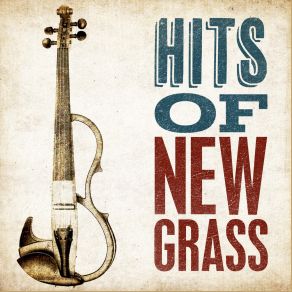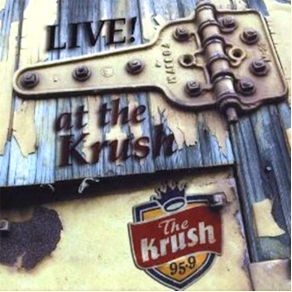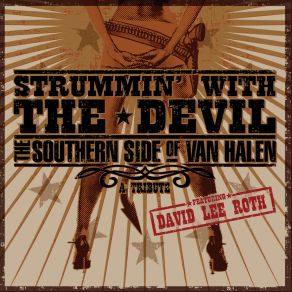David Grisman
Wikimp3 information about the music of David Grisman. On our website we have 10 albums and 59 collections of artist David Grisman. You can find useful information and download songs of this artist. We also know that David Grisman represents Songwriter/Lyricist genres.
Biography
[Edit]David Grisman is normally associated with the bluegrass wing of country music, but his music owes almost as much to jazz as it does to traditional American folk influences. Because he couldn't think of what to call his unique, highly intricate, harmonically advanced hybrid of acoustic bluegrass, folk, and jazz without leaning toward one idiom or another, he offhandedly decided to call it "dawg music" — a name which, curiously enough, has stuck. A brilliant mandolinist, with roots deep in the Quintet of the Hot Club of France, Grisman's jazz sensibilities were strong enough to attract the admiration of the HCQ's Stephane Grappelli, who has toured and recorded with Grisman on occasion.
Grisman was already playing the piano, saxophone, and mandolin by the time he was a teenager, taking up the latter at age 16. While attending New York University in 1963, he began playing with the Even Dozen Jug Band, which at one time included Maria Muldaur and John Sebastian. In 1966, bluegrass bandleader Red Allen invited Grisman to join his Kentuckians, and the following year Grisman joined Peter Rowan in the progressive-minded Earth Opera, which blended folk, country, rock, pop, and jazz. After two albums, he moved to San Francisco and hooked up with Jerry Garcia, playing on the Grateful Dead's classic American Beauty. He went on to play in Garcia's bluegrass side project, Old & in the Way, along with Peter Rowan, who also reteamed with him in the loose all-star group Muleskinner. In 1974, Grisman co-founded the Great American String Band with Muleskinner fiddler Richard Greene, which first allowed him to explore the lengthy instrumental improvisations that would become his trademark.
Greene didn't stick around for too long, and in 1976 Grisman assembled a new group dubbed the David Grisman Quintet, which featured guitarist Tony Rice, fiddler Darol Anger, bassist Joe Carroll, and mandolinist/bassist Todd Phillips. The Quintet's self-titled debut was released in 1977 on Kaleidoscope and proved a seminal influence on the so-called "newgrass" or "new acoustic" movements, thanks to its progressive, jazz-fueled harmonies and improvisations. The follow-up, 1979's Hot Dawg, was Grisman's breakthrough album; it was released on A&M's jazz imprint, Horizon, and featured guest work by jazz violin legend Stephane Grappelli. By this time, there was already personnel turnover in the Quintet; mandolinist Mike Marshall joined up, and by the time Grisman moved to Warner and recorded Mondo Mando in 1981, bassist Rob Wasserman and violinist Mark O'Connor joined Rice, Anger, and Marshall. In all, Grisman recorded four albums for Warner over 1980-1983; 1982's Dawg Jazz/Dawg Grass was another notable outing with Grappelli that, true to its title, split its repertoire between swing and bluegrass.
By 1984, the original "dawg music" lineup had largely broken up, with most of the members moving on to productive solo and/or collaborative projects (Anger notably joined the Turtle Island String Quartet). Grisman played on a number of sessions in the meantime, including with jazz-minded banjo virtuoso Béla Fleck, who claimed Grisman as a major influence. In 1985, Grisman organized a new group with seasoned jazz musicians: bassist Jim Kerwin, guitarist Dimitri Vandellos, and drummer George Marsh, who backed him on a 1987 duet album with jazz violinist Svend Asmussen, Svingin' with Svend. The more traditional bluegrass outing Home Is Where the Heart Is followed in 1988, before Grisman formed his own Acoustic Disc label in 1990 and got much more prolific.
A steady stream of releases appeared on Acoustic Disc during the first half of the '90s, starting with Dawg '90, which debuted a new core group that included Kerwin, fiddler/drummer Joe Craven, and flutist Matt Eakle, as well as returning alum Mark O'Connor, guitarist John Carlini, and fiddler Matt Glaser. Other notable releases included a 1991 reteaming with Jerry Garcia and two albums of Tone Poems (i.e., duets with Tony Rice and Martin Taylor, respectively). Argentine guitarist Enrique Coria joined the lineup of Grisman, Kerwin, Craven, and Eakle for 1995's Latin-flavored Dawganova. Grisman entered another productive period in 1999, issuing several widely varied projects, and reconvened that quintet for 2002's Dawgnation. A collection of collaborations with other bluegrass musicians recorded over three decades, Life of Sorrow, was released in 2003 by Acoustic Disc, followed by New Shabbos Waltz, a collaboration with Andy Statman, in 2006, also on Acoustic Disc. ~ Richard S. Ginell & Steve Huey, Rovi
Title: Doc & Dawg
Artist: Doc Watson, David Grisman
Genre: Rock, World Music, Country, Songwriter/Lyricist
Title: Jerry Garcia / David Grisman
Artist: Jerry Garcia, David Grisman
Genre: Jazz, Rock, Folk Rock, Rock & Roll, Country, Songwriter/Lyricist, Psychedelic
Title: Bluegrass Mandolin Extravaganza
Artist: Sam Bush, Ricky Skaggs, David Grisman, Del McCoury, Jesse McReynolds, Frank Wakefield, Bobby Osborne, Ronnie McCoury
Genre: Songwriter/Lyricist
Title: Just Among Friends
Artist: David Grisman, Bucky Pizzarelli, Gerry Beaudoin Trio
Title: Jerry Garcia & David Grisman
Artist: Jerry Garcia, David Grisman
Genre: Jazz, Rock, Alternative Rock, Folk Rock, World Music, Country, Country Rock, Pop, Folk
Collections
Title: The Best of Indie Roots
Genre: Folk
Title: The Greatest Bluegrass Artists
Genre: Country
Title: Classic Country Essentials: American Boy's
Genre: Country
Title: Classic Country Essentials: American Girls
Genre: Country
Title: Divided & United: The Songs of the Civil War
Genre: Country
Title: Instrumental Classic Country Hits
Genre: Country
Title: The Appalachians
Genre: Country, Songwriter/Lyricist
Title: Connections 2 (Limited Edition)
Genre: Rock
Title: Fantasy and Passion
Genre: World Music
Title: The Rounder Records Story
Genre: Alternative, Songwriter/Lyricist
Title: Tone Poets
Genre: Songwriter/Lyricist
Title: Bluegrass - Old and New
Genre: Country
Title: Hits of Newgrass
Genre: Country
Title: Ride That Train
Genre: Country
Title: Bluegrass Instrumentals
Genre: Country
Title: Valentine for Music Lovers
Genre: Songwriter/Lyricist
Title: Putumayo Presents Bluegrass
Genre: Songwriter/Lyricist
Title: American Roots
Genre: Rock, Punk Rock, Pop, Songwriter/Lyricist, Contemporary Folk
Title: Electric Apricot - Quest for Festeroo
Genre: Alternative, Theatre/Soundtrack
Title: 100% Handmade Music, Vol. 3
Genre: Rock, Songwriter/Lyricist
Title: Pickin' and Grinnin'
Genre: Jazz
Title: Instrumental Bluegrass - Banjo
Genre: Country
Title: LIVE! at the Krush
Genre: Rock
Title: LIVE! At the Krush
Genre: Rock
Title: Bluegrass Class of 1990
Genre: Country
Title: American Roots
Genre: World Music, Folk
Title: Country Hoedown
Genre: Country
Title: Country Rags and Reels
Genre: Country
Title: Acoustic Cheer
Genre: Songwriter/Lyricist
Title: Fastest Bluegrass Alive
Genre: Country
Title: Country Music Hall of Fame
Genre: Country
Title: Bluegrass Mandolin
Genre: Country
Title: Best of Country Mandolin
Genre: Country
Title: Golden Bluegrass
Genre: Country
Title: Amazing Folk for the Family
Genre: Folk
Title: Rambling Fever: Country Music Hits the Road
Genre: Country
Title: The Real Music Box ~ 25 Years Of Rounder Records (CD1)
Genre: Blues, World Music, Country, Folk
Title: 25 Years Of Rounder Records Hand-Picked (CD1)
Genre: Blues, World Music, Country, Folk
Title: 100% Handmade Music Vol. I
Genre: Blues, Jazz, World Music, Country, Country Folk , Acoustic, Contemporary Folk, Folk
Title: Dear Jerry: Celebrating The Music Of Jerry Garcia
Genre: Rock, World Music, Pop, Folk
Title: Hdtracks Hi-Res Sampler
Genre: Blues, Jazz, Rock, Punk Rock, World Music, Pop, Classical, Folk
Featuring albums
Title: Part of Your History - The Songs of John Hartford
Artist: Jamie Hartford
Genre: Rock, Country, Alternative Country, Songwriter/Lyricist
Title: First Time Together (feat. Frank Vignola Martin Taylor)
Artist: Grisman Taylor Vignola
Genre: Jazz
Title: 3rd Annual Farewell Reunion
Artist: Mike Seeger
Genre: Folk Rock, World Music, Country, Songwriter/Lyricist
Title: Divided & United: The Songs Of The Civil War
Artist: Various Artists
Genre: Country, Songwriter/Lyricist
Title: 100% Handmade Music Volume I
Artist: Various Artists
Genre: World Music, Country, Contemporary Folk, Folk
Title: 100% Handmade Music Volume III
Artist: Various Artists
Genre: Blues, Rock, World Music, Country, Folk
Title: 100% Handmade Music Volume VI
Artist: Various Artists
Genre: Jazz, World Music, Country, Contemporary Folk, Folk
Title: Down To The Roots
Artist: Lowell Levinger
Genre: Blues, Rock, World Music, Country, Pop, Alternative, Songwriter/Lyricist, Funk
Title: Jug Band Extravaganza
Artist: Various Artists
Genre: World Music, Alternative, Songwriter/Lyricist
Title: The David Grisman Sextet
Artist: David Grisman Sextet
Genre: Jazz, World Music, Country, Songwriter/Lyricist, Acoustic







































































































